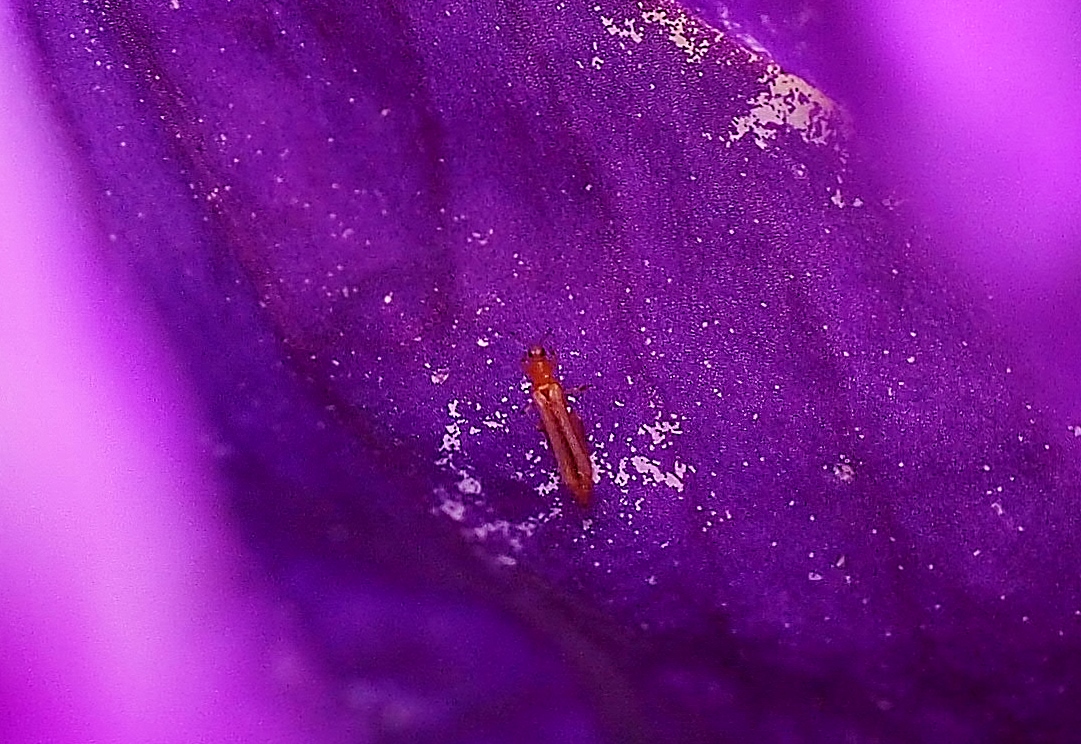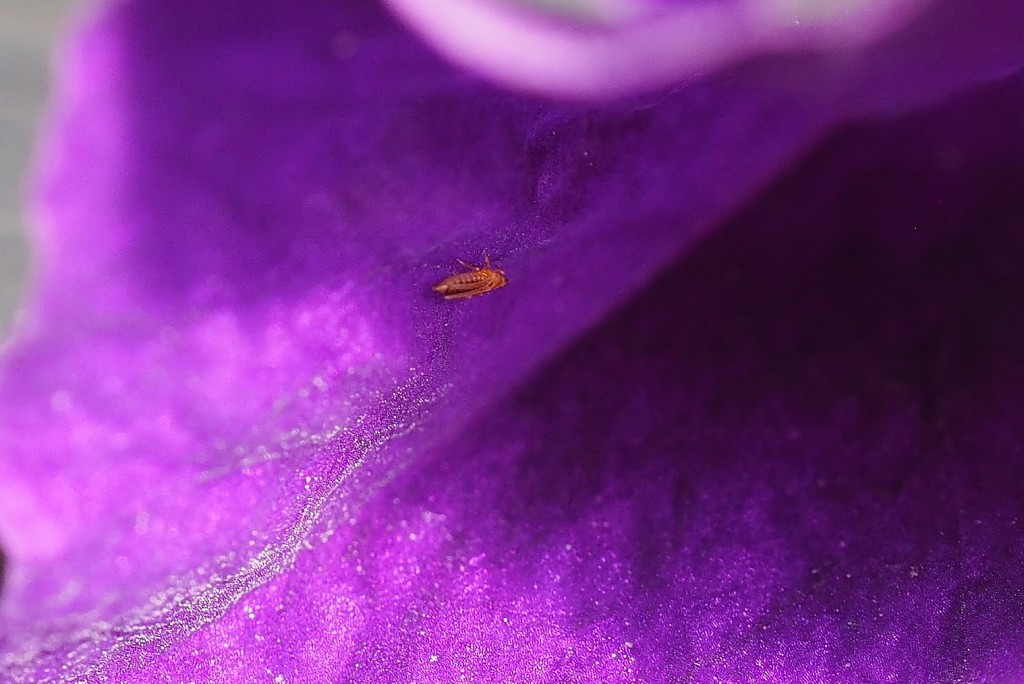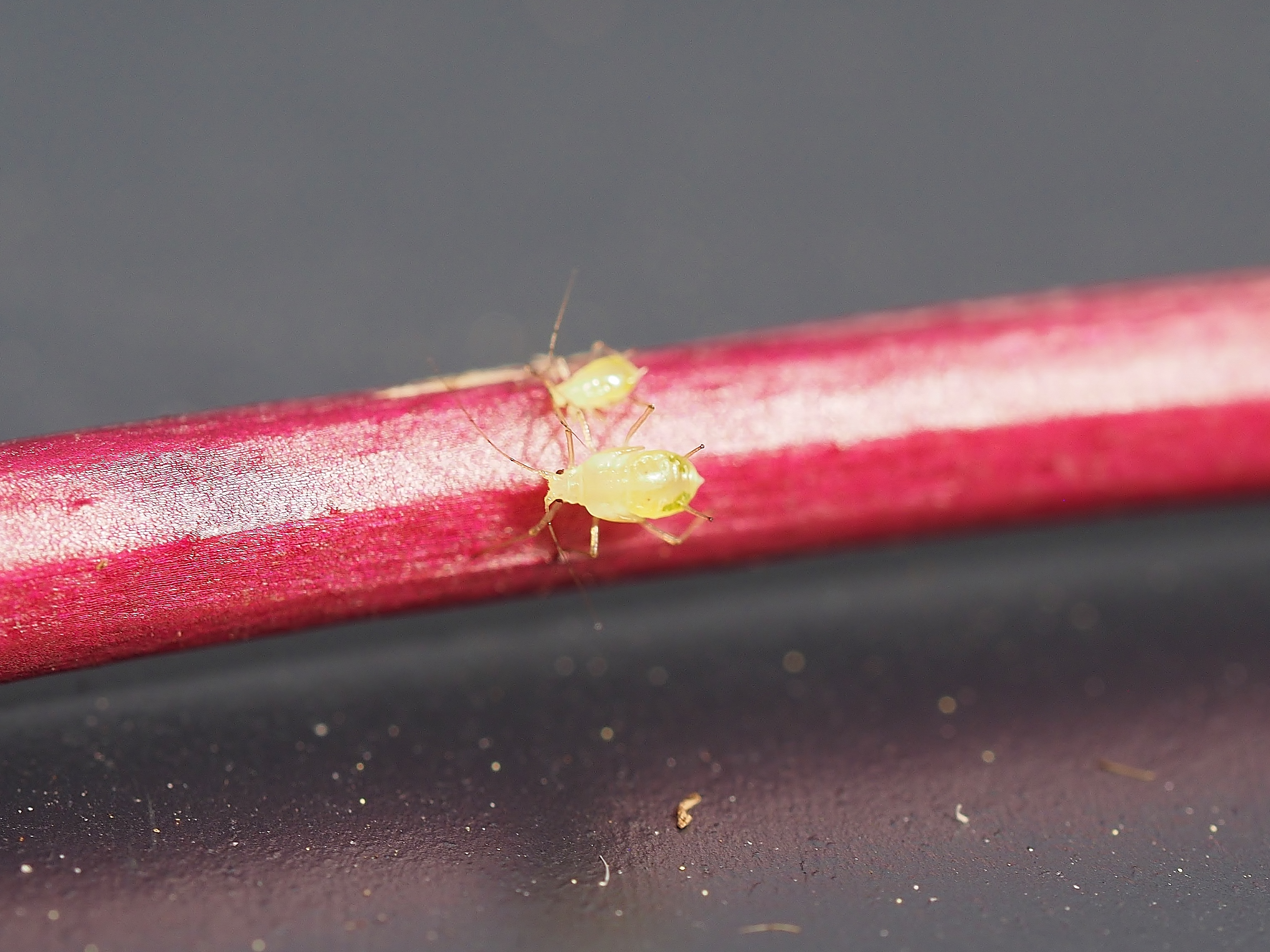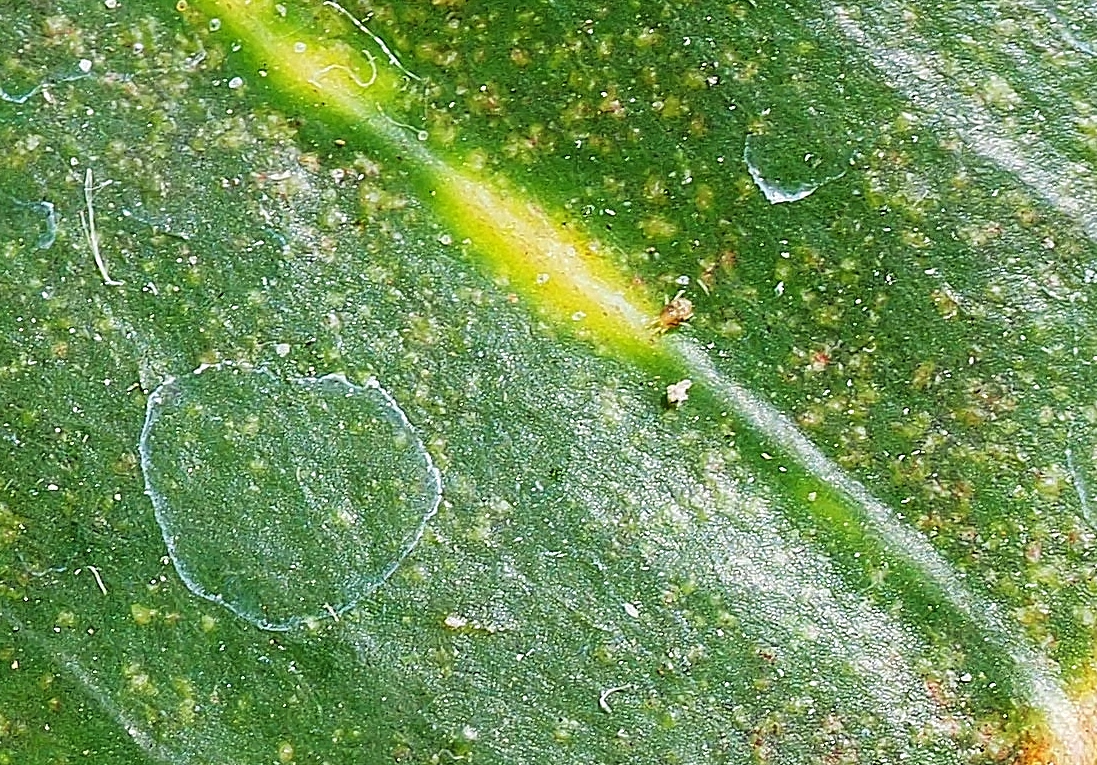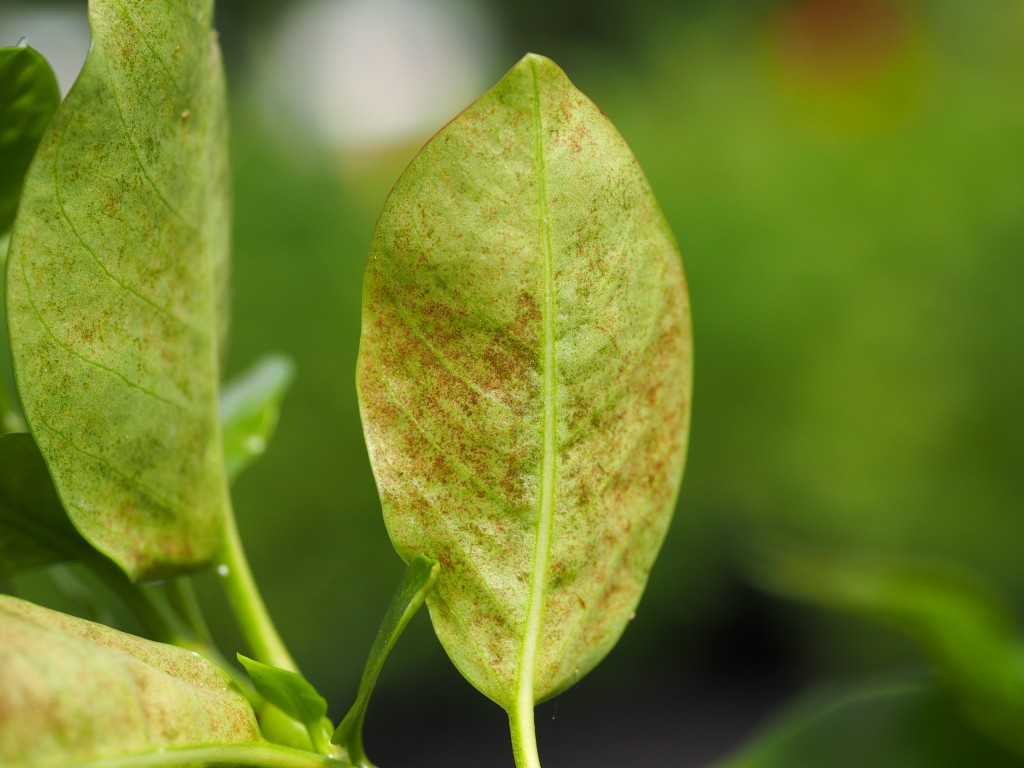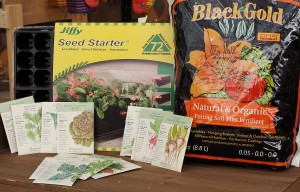Once the heat of summer comes along it seems every aphid, spider mite, and leaf miner and thrips pay a visit to my garden. In the case of most garden pests, high summer temperatures create the perfect environment for rapid reproduction. Learning to identify the what creatures are munching on the garden plants is the key to gaining control. Once identified, we can learn a little about their life cycle so we can choose the best method of control.
Many garden pests can be controlled with a garden hose and a strong spray nozzle. If we scout out the garden regularly, chances are we can find them before they become a serious infestation. Most pesticides (organic, natural, or otherwise) are effective on specific pests. There isn’t a single pesticide that is effective on every garden pest, which is all the more reason we really need to identify what’s chewing away on our plants in order to form a responsible plan of attack. After all, no one wants to spray anything willy-nilly through their garden. Not only would that be a waste of time, energy and money, it may also pose a risk to those beneficial insects we actually need in our gardens.
Thrips are super tiny insects that aren’t easily seen without magnifying lens. Most often we see Western Flower Thrips in the garden. They are slender, tan insects, about .2 mm long. They are so tiny, we usually see the damage to our plants long before we notice the insects. They are notoriously difficult to treat because they often feed on the tender tissue inside buds or the folds of immature foliage. They are sucking insects so they often leave buds and leaves deformed and scarred. Thrips are particularly attracted to blue flowers. Knowing this, I usually plant a few dark blue petunias and use them as sentinel plants. Once I start to see stippling on the flowers and areas that have clearly lost their color due to tissue damage, I can bet they have decided to make a home in my flowers. A strong spray of water can drown them. If they persist, try using an insecticidal soap, neem oil or pyrethrin spray. Thrips are also known to spread tomato spotted wilt virus, spreading it from plant to plant as they feed.
Below you can see the damage and the thrips.
Aphids are probably the most common and devastating garden pest. They may be green, red or black. They are plump, soft bodied, little insects and we can usually identify them by their cornicles (tubes that sort of look like horns protruding from their abdomen). Aphids are also sap sucking insects that leave our plants with deformed, stunted buds, blooms and leaves, reducing productivity of vegetables. Aphids are also capable of spreading many plant viruses. They are, however, one of the easiest insects to control when they are found early. Hosing off plants with a strong stream of water will go a long way toward eliminating aphids. Neem oil and pyrethrins are very effective treatments, too. Aphids can build up a tolerance to pesticides with each generation, so alternate whatever you use to insure the best results.
Aphids pictured below.
We often see spider mites after we’ve noticed their webs. These teeny-tiny insects can make foliage appear gray-green and speckled. We see the damage primarily on the back side of the leaves. The top of the leaves may appear a bit discolored, faded and the speckling may be obvious. They can be hosed off with a strong stream of water. They may also be treated with insecticidal soap, neem oil, or pyrethroids.
Spider Mite on Croton leaf, pictured below.
Spider mite damage to Mandevilla pictured below.
It’s important to note that any chemical, organic or otherwise, should be used according to the directions on the label. All chemicals are expected follow specific protocols established by the EPA. In other words, the label is the law and there is no substitute for reading the fine print. Don’t spray on a windy day when the chemical may drift onto other people, plants, wildlife, or toward beneficial insects. Water the day before you spray and spray in the early morning or late evening hours. This helps reduce the risk of damage to your plants from the spray. Be sure to wear gloves and the appropriate protective gear when handling any chemical.
